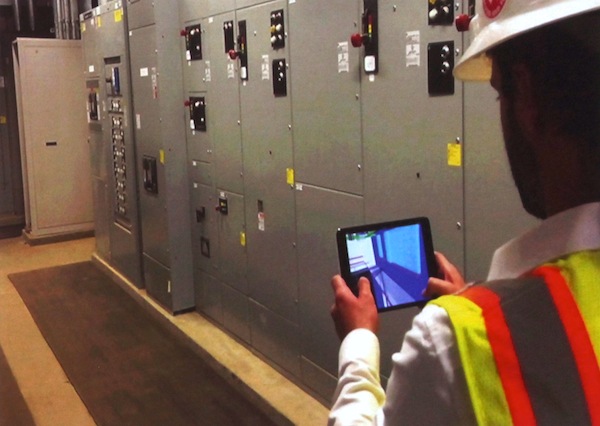Geopositioning, augmented reality to boost Crown maintenance

Crown — a sprawling casino and entertainment complex in Melbourne, Australia, that with annual revenues of A$1.8 billion (US$1.73 billion) is among the southern hemisphere's largest — is embracing geopositioning, augmented reality, and mobile technologies as it overhauls maintenance of its massive infrastructure.
Raw statistics highlight the challenges of running a 24/7 facility with 6,800 employees and 3,000 contractors managing three discrete luxury hotels and related conference venues, 2,500 gaming machines, 500 gaming tables, and 40 restaurants.

These customer amenities are serviced by what general manager of property services Demara Jackson told attendees at this week's IBM Pulse service management conference is "a parallel universe" of behind-the-scenes infrastructure including 290 air-conditioning units, 130 elevators and escalators, nearly 2 million light fittings, and even 7.5 miles (12km) of beer-service lines delivering 350 kegs of beer every week.
"The very high level of service focus in the front-of-house organisation means there is a very high drive on the engineering and maintenance team to deliver fast and efficient service," Jackson said.
"Rapid response is important because even a leaking pipe can shut down a restaurant, costing tens of thousands of dollars in lost revenue and disappointed customers. A glitch in a gaming room can cost us hundreds of thousands of dollars. Once, when a group of elevators was out of service and a high-rolling customer worth millions of dollars to Crown had to travel by back-of-house lift, he took affront and left."
A team of 120 electricians, plumbers, carpenters, upholsterers, and engineers try to avoid such problems by maintaining those infrastructure assets for the up to 100,000 people who pass through the venue on a typical day.
Yet while a recent implementation of IBM's Maximo asset-management system has given it improved visibility of its extensive infrastructure assets – some 18,000 pieces of equipment have been catalogued and tracked since go-live six months ago – it is mobile technology that holds the greatest promise for empowering workers in the long run.
Mobile to the Maximo. Implementation of IBM's companion Maximo EveryPlace mobile-enabling application has already allowed iPhone-wielding staff to get mobile access to current maintenance jobs – particularly important in optimising the work of the nighttime skeleton crew of just seven people.
Given that staff are almost continually on the move — the average maintenance officer travels over 4.3 miles (7km) per day — mobile access helps them better target their efforts to reduce wasted time and effort.
Crown eventually aims to reduce this by adding geopositioning capabilities to guide staff between jobs, considering their current position and the relative positions of the various outstanding jobs, matched to the skill sets and the materials required to address them.
Intelligent routing, based on current location information, will stop maintenance staff from doubling back or wasting time walking too far between jobs. "Travel time represents around 25 percent of the cost of every job we do," Jackson explained.
Another long-term innovation is the use of augmented reality, which will become possible as the dataset in Maximo continues to be filled out. By using smartphone or tablet applications' geopositioning capabilities, Crown maintenance staff will be able to use the location information in the maintenance system to locate and adjust critical infrastructure assets that are often hard to find.
"Due to the high aesthetic requirements within the property, key infrastructure is often well hidden," Jackson said.
"In the future, combining systems such as geopositioning and augmented reality could provide data to a system when resolving an event such as a leaking pipe. A maintenance officer could get an image of where a shutoff valve is for a pipe on the floor above, thus enabling a faster response."
"We see this as being a significant opportunity with much of our core equipment."
Better maintenance. Crown continues to expand its asset register and has been able to improve staff efficiency by filtering out non-essential maintenance, duplicate requests, or requests to fix or clean equipment that was only recently serviced.
Items receiving repeated maintenance can be targeted and investigated in depth – often with suprrising resolution. For example, a recent spate of dishwasher repairs led the team to realise some staff weren't rinsing food off plates before they were washed — clogging up the pipes and leading to repeated interruptions from maintenance calls.
"Identifying this, then training staff and reinforcing the importance of pre-rinsing the dishes, meant we didn't have to find another way to wash 10,000 plates and who knows how much cutlery," Jackson said.
"We're only just beginning to capture the data we need in Maximo, and to really work with it in terms of measuring our costs. There's still much to do."